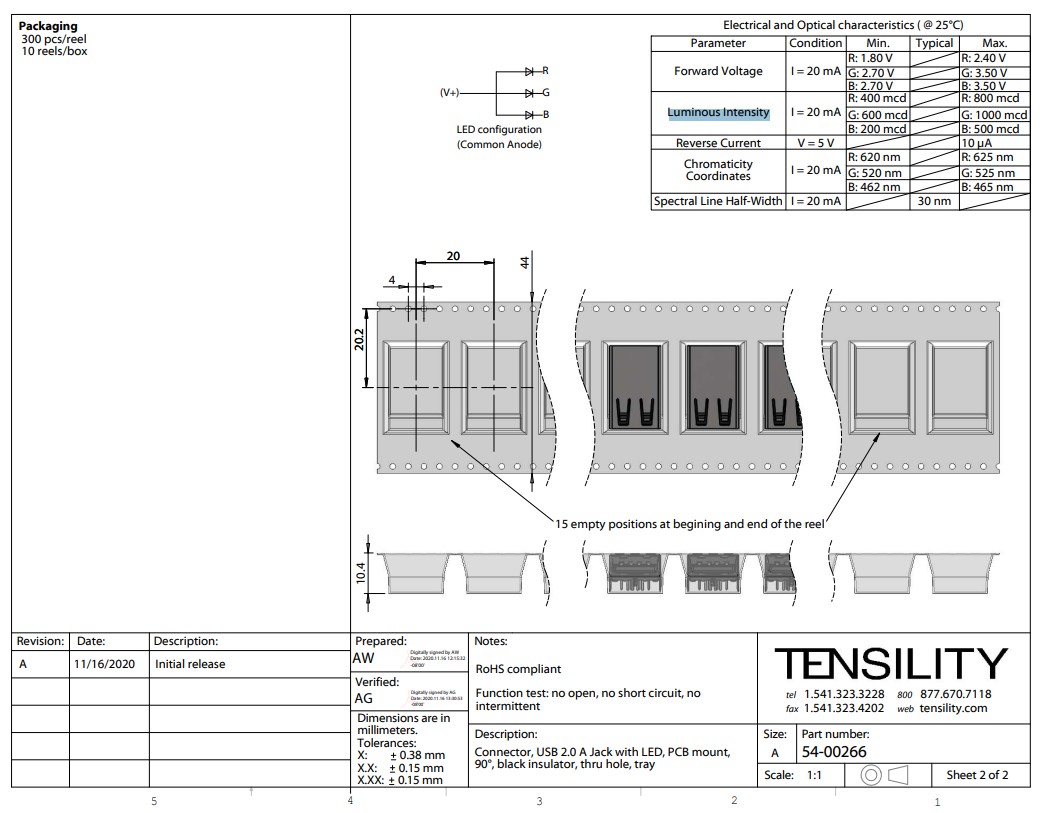Custom USB Ports Add RGB Bling for Your Next Maker Project
Are your USB ports boring? Do they need some RGB? Well, this $6 USB 2.0 Type-A port from Tensility International Corporation, listed via Digi-Key aims to light up your dark and dreary USB ports. Hat tip to Arturo182 for bringing this to our attention.


Rated for up to 30V at 3A (90W via USB A?), this RGB USB port uses an RGB LED with a common anode connected to the power pin. The colors can then be mixed by controlling the state of each color's cathode pin. Controlling those pins would be the job of a microcontroller, perhaps the Raspberry Pi Pico's RP2040 on a custom PCB. In the datasheet, we can see that there are two rows of pins. Those nearer the front of the USB port handle the standard USB 2 duties. The rear four pins are for the LEDs in a Blue, Green, Voltage, and Red configuration. The additional LED pins mean we can't just drop this part into an existing board. Instead, they must be installed into a custom board with traces routed to send signals to the RGB LED. It also looks like a typical USB A port, ready for soldering into a 1.6mm or less thick PCB.
As we have already noted, this port is capable of up to 90W of power delivery, so an interesting use case would be to set the RGBs to denote a set voltage. Using a buck converter or voltage regulator, we could set the appropriate voltage and trigger the microcontroller to illuminate a color to indicate. Say red for 30V, green for 12V and blue for 5V? A simple flick of a switch would set the voltage and trigger the color change. Or we could use PWM (Pulse Width Modulation) to mix a specific color for voltages in between. While this won't be as clear as using a NeoPixel of APA102 RGB LED, it will get the job done.
| Forward Voltage at 20 mA | R | 1.8 - 2.4 V |
| Row 1 - Cell 0 | G | 2.7 - 3.5 V |
| Row 2 - Cell 0 | B | 2.7 - 3.5 V |
| Luminous Intensity at 20 mA | R | 400 - 800 mcd |
| Row 4 - Cell 0 | G | 600 - 1000 mcd |
| Row 5 - Cell 0 | B | 200 - 500 mcd |
This through-hole component is available via "cut tape" and "reel." The former enables small amounts to be purchased for short runs / individual projects. The latter is favored by manufacturers who will load the reel ready for a pick and place machine to place the components on a run of boards.
If you are designing your own product or have the skills to retrofit the port into an existing build (not something we recommend), then $6 isn't a lot to ask for a little bling.
Get Tom's Hardware's best news and in-depth reviews, straight to your inbox.

Les Pounder is an associate editor at Tom's Hardware. He is a creative technologist and for seven years has created projects to educate and inspire minds both young and old. He has worked with the Raspberry Pi Foundation to write and deliver their teacher training program "Picademy".